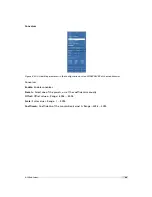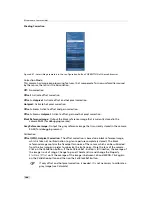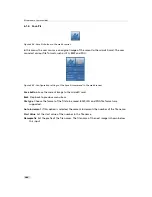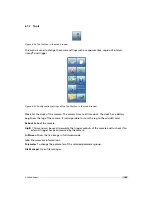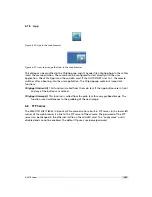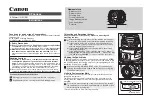
7 Mechanical and Optical Considerations
7.2
Optical Interface
7.2.1
Cleaning the Sensor
The sensor is part of the optical path and should be handled like other optical components:
with extreme care
.
Dust can obscure pixels, producing dark patches in the images captured. Dust is most visible
when the illumination is collimated. Dark patches caused by dust or dirt shift position as the
angle of illumination changes. Dust is normally not visible when the sensor is positioned at the
exit port of an integrating sphere, where the illumination is diffuse.
1.
The camera should only be cleaned in ESD-safe areas by ESD-trained personnel using wrist
straps. Ideally, the sensor should be cleaned in a clean environment. Otherwise, in dusty
environments, the sensor will immediately become dirty again after cleaning.
2.
Use a high quality, low pressure air duster (e.g. Electrolube EAD400D, pure compressed
inert gas, www.electrolube.com) to blow off loose particles. This step alone is usually
sufficient to clean the sensor of the most common contaminants.
Workshop air supply is not appropriate and may cause permanent damage to
the sensor.
3.
If further cleaning is required, use a suitable lens wiper or Q-Tip moistened with an
appropriate cleaning fluid to wipe the sensor surface as described below. Examples of
suitable lens cleaning materials are given in Table 7.1. Cleaning materials must be
ESD-safe, lint-free and free from particles that may scratch the sensor surface.
Do not use ordinary cotton buds. These do not fulfil the above requirements and
permanent damage to the sensor may result.
4.
Wipe the sensor carefully and slowly. First remove coarse particles and dirt from the
sensor using Q-Tips soaked in 2-propanol, applying as little pressure as possible. Using a
method similar to that used for cleaning optical surfaces, clean the sensor by starting at
any corner of the sensor and working towards the opposite corner. Finally, repeat the
procedure with methanol to remove streaks. It is imperative that no pressure be applied
to the surface of the sensor or to the black globe-top material (if present) surrounding the
optically active surface during the cleaning process.
110
Summary of Contents for SM2-D1312-TI6455
Page 1: ...User Manual SM2 D1312 TI6455 VisionCam PS CMOS DSP Camera MAN060 05 2013 V1 0...
Page 2: ......
Page 4: ...2...
Page 8: ...CONTENTS 6...
Page 48: ...4 Functionality Figure 4 28 Example of decimation 2 on image of injection needle 46...
Page 80: ...4 Functionality 78...
Page 110: ...6 Framework Functionalities 108...
Page 116: ...8 Warranty 114...
Page 118: ...9 References 116...
Page 122: ...A Pinouts 120...
Page 123: ...B Revision History Rev 1 0 May 2013 First version 121...




